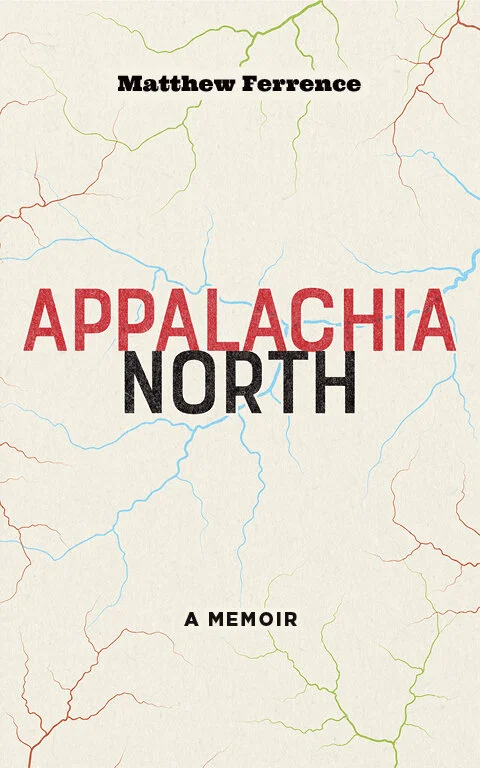APPALACHIA NORTH by Matthew Ferrence
West Virginia University Press $26.99
Reviewed by Brendan Curtinrich
We are where we are from. So proselytizes Matthew Ferrence, author of Appalachia North, a memoir about his life in the forgotten northern geology of Appalachia America. Whether by comfort in our native climate or by our molecular composition (in Ferrence’s case, the bright tendrils of aluminum and iron sulfate seeping waterward from esophagi of abandoned mines), our identities are connected to the places we have lived.
Ferrence was raised on a farm in southwestern Pennsylvania, but lives and works now in the northwest corner of the state, in “a nexus of two different sorts of declining fortune,” what he calls “the confluence of Rust Belt and Appalachia” (44).
These places are unequivocally Appalachian by geological and political standards. Yet, they lie beyond the contrived borders of the stereotype: Appalachia only as the nation’s black, bituminous underbelly, industry’s sacrificial lamb, and home to the uneducated and economically downtrodden. By this account, “contemporary” America rolls on, but Appalachia is condemned to remain immobile, its reputation petrified and unaging in a West Virginia holler.
Appalachia is viewed from afar as a monochrome distillation of its usefulness, defined by clichéd customs and dispositions in order to perpetuate a cycle of exploitation paraded as recovery. Ferrence’s adoration of place and vivid childhood memories are a powerful antidote to this typical, trite depiction. To him, Appalachia is an “obstacle to American Blandness . . . the opposite of suburban, where flatness of identity owns all, where beige is a state of ecstasy” (182).
And that’s the crux—that while Appalachia may be some of the things we have heard it to be, crucially, it is not only those things. Ferrence complicates the popular dimensionality of the region through his personal experience living in and observing the area. He sharply critiques the common, ugly tropes of poverty, incest, murder, and ignorance, and finds intersection between the mountainous eastern U.S. and the topography of his own body.
Overlaying his reflection on the region is his story of being diagnosed with a brain tumor. Suddenly, the landscape and the self are difficult to parse. The former, a plateau eroded by time and water, the latter, a man worn down by surgery, radiation, and fear, both existing “where relief is produced not by uplift but through degradation” (59).
The parallel is powerful and apparent, but the clear, vulnerable account of tumor treatment countervails the academic, analytical investigation into Appalachian identity. It’s a tandem narrative that complements and accentuates itself and doesn’t fall into the usual trap: showing the region as destitute and penniless. Appalachia North flips the narrative, portraying erosion as positive, necessary, and natural, and emphasizing that, while we are where we are from, that identity need not be what people expect.
Brendan Curtinrich grew up on the north coast of Ohio and in the sheep pastures of New York. He studied creative writing at Hiram College and holds an MFA in Creative Writing and Environment from Iowa State University where he also served as the Nonfiction Editor and Book Review Manager for Flyway: Journal of Writing and Environment. He has walked long trails both in the U.S. and abroad, and writes nonfiction and fiction about ecological issues, particularly the ways human animals affect and are affected by the environment. His work has been published or is forthcoming in Trail Runner, Appalachia, Gigantic Sequins, Sierra, and Footnote.

